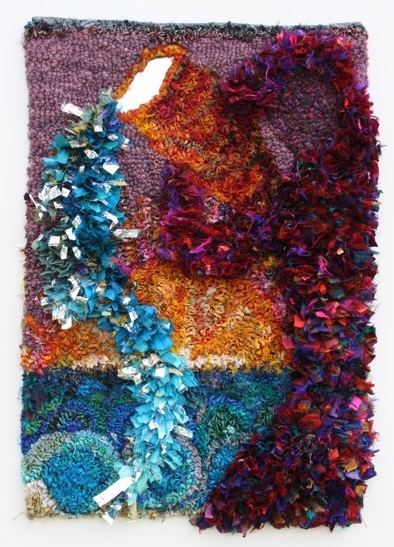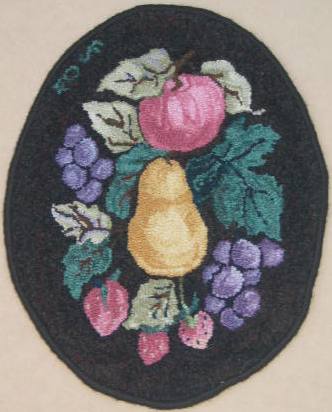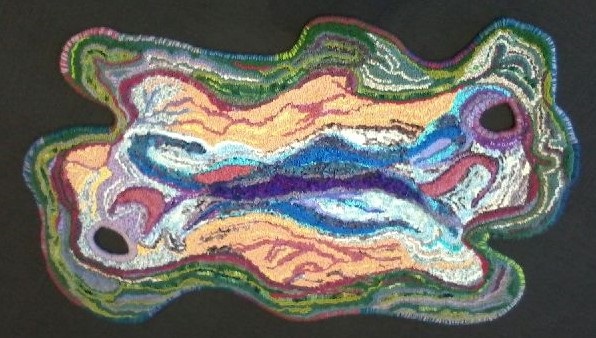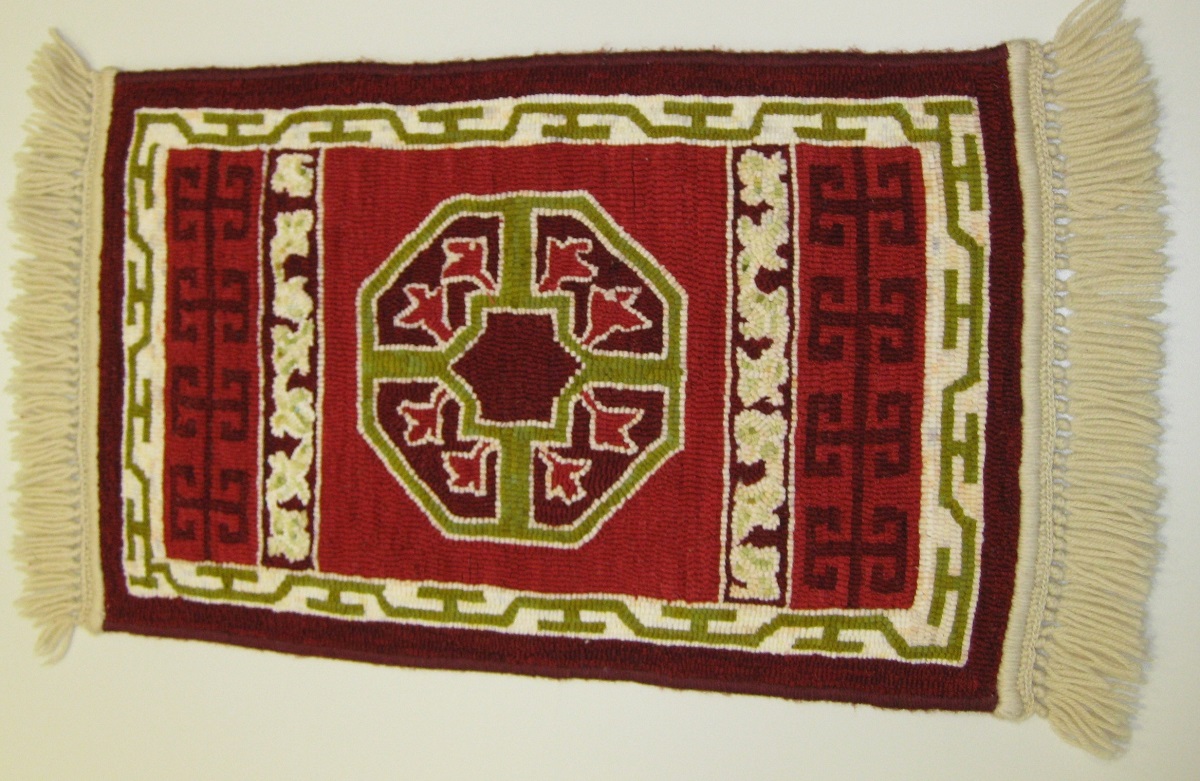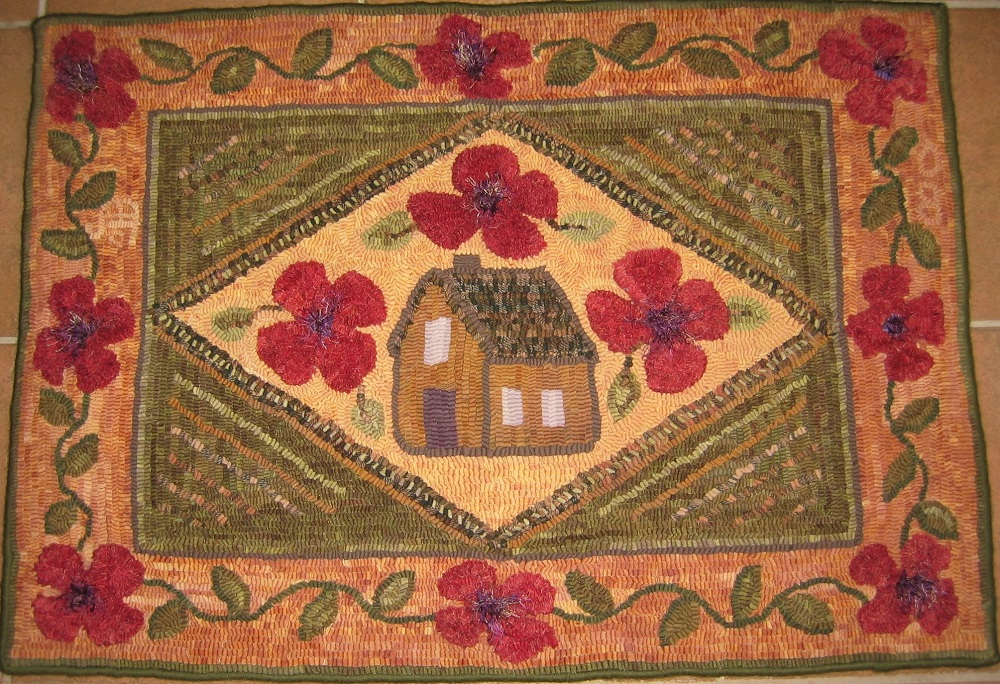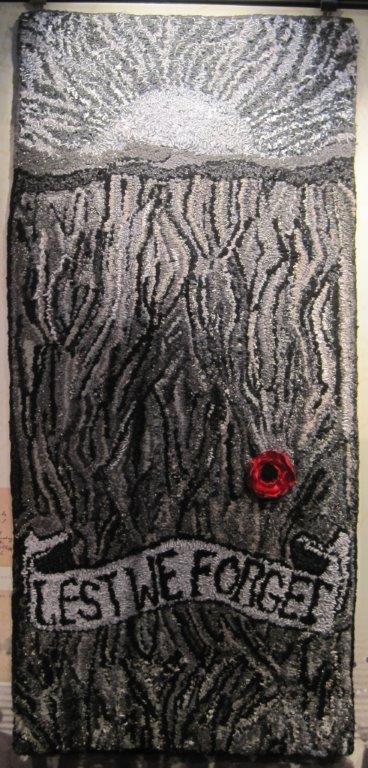ISSN 2207-001X 2nd August, 2017
 I’m “on the road again” and have been interviewing rug makers along the way as I travel across Australia.
I’m “on the road again” and have been interviewing rug makers along the way as I travel across Australia.
Maybe it’s my turn to answer these questions.
Like many of the rughookers I’ve spoken with, I come to rughooking from a background of “domestic” textile techniques; dressmaking and knitting.
First lessons from my Grandmother, a tailoress, then my Mother, a perfectionist; patterns were to be followed to the “T” and all preparatory steps adhered to. I was still “tailor-tacking” when everyone else had switched to knit fabrics, “quick” patterns and making a garment in an afternoon!
I also liked to draw and have dabbled with lessons in oils and water colour. Living in the USA, Caribbean, Philippines and North Africa and having been fortunate to travel in the UK, Europe and Asia; without really being conscious of it, I’ve been infused with an awareness of how other cultures use fabric, materials, colour and texture in their art whether it be fibre, tiles, rugs, paintings etc. which speaks to the importance of exposing oneself to a broad range of experiences and why pushing boundaries is so important, you never know how that experience might emerge through you work.
When I discovered rughooking it seemed as though “I’d come home”.
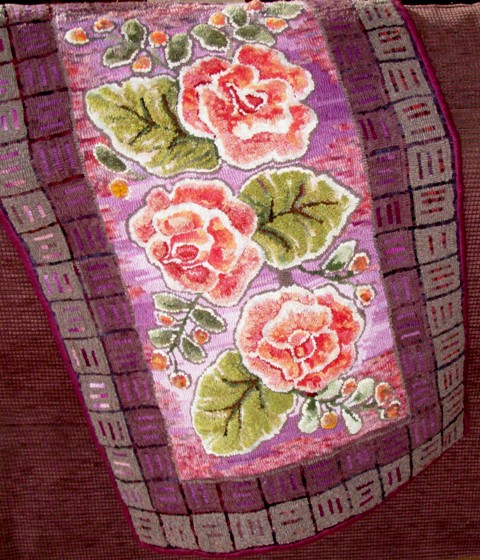
If a gallery called you, how would you describe your work?
Initially, I would have said I “painted with wool” (fabric strips). 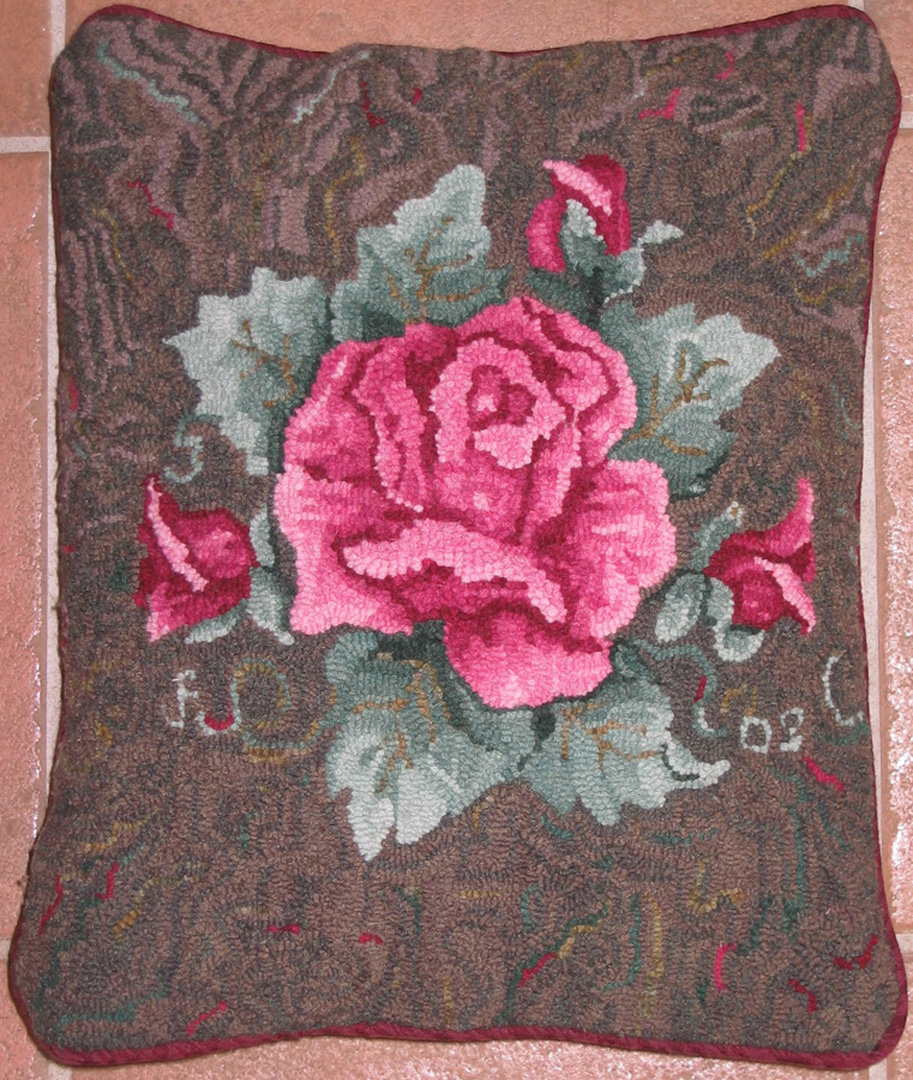
These days I’m more apt to say I use rug hooking techniques to create fibre art.
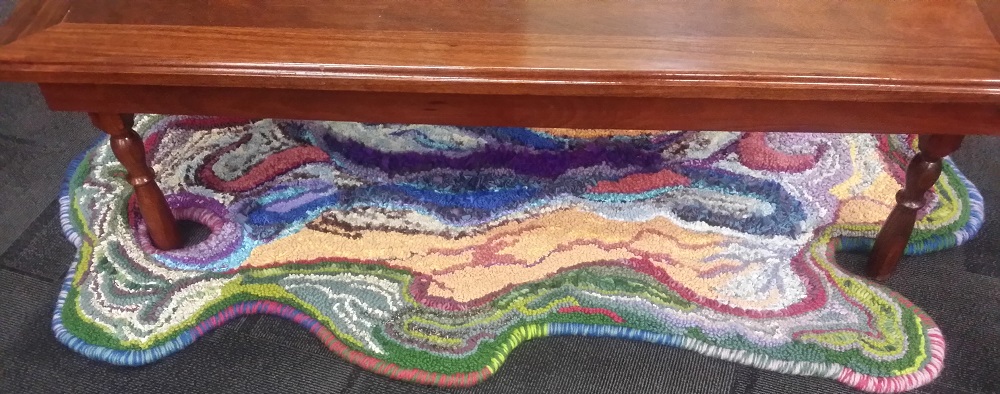
What captures your imagination about a particular technique or approach to your work?
The “simplicity” of the rughooking techniques means I don’t have to pick up a tape measure or a ruler – phew! There’s a certain “freedom” – I’m not constrained by tiny stitches or exacting work.
measure or a ruler – phew! There’s a certain “freedom” – I’m not constrained by tiny stitches or exacting work.
I find the simple repetitive movements of pulling loops to be very relaxing, even therapeutic.
These days I choose to work using recycled fabrics and yarn rather than the narrow strips of woollen fabric, width measured in 32nds of an inch, used for this rectangular Scroll Sampler (turned into a clutch purse) which shows the different types of shading.
Colour planning is now a different process for me. With an idea of the colours I want to work with – I gather fabrics in those hues, bunch them together and photograph and then begin to hook, often changing my mind as I go, instead of working it all out ahead of time, painting on paper and then dyeing fabric to come up with the desired results.
work with – I gather fabrics in those hues, bunch them together and photograph and then begin to hook, often changing my mind as I go, instead of working it all out ahead of time, painting on paper and then dyeing fabric to come up with the desired results.
Who – or what – influenced your early work? Has your later work been influenced by the same person/style/technique?
Learning to hook while living in the United States and gaining my accreditation with the McGown Guild, gave me a great appreciation for the detailed and fine-shaded work of the many experienced rug hookers. Charlotte Price, then the Director of the Western Teachers’ Workshop, Eugene, Oregon, sponsored me, a novice rug hooker, to participate in the 5-year accreditation programme for rughooking teachers. Experienced rug hooking teachers come together at these annual week long residential gatherings to share their knowledge and rug hooking specialities, also train sponsored rug hooking teachers in the finer points of rug hooking and how to teach others. The prayer rug was the project for my first day as a rug hooker – not much was completed that first day. However, before I graduated it was finished, along with the other four projects from that first week.
Having the good fortune to take workshops from so many experienced and well known rug hookers from all over the USA and Canada, gives me a feeling of a personal connection when I see their names in print in Rug Hooking Magazine.
My fellow trainees included Laura Pierce (LWP) – from whom I’ve learned much about dyeing. Also Michele Sirois-Silver who has taken rug hooking to a different level and is always happy to share her rug hooking “processes” with me. “How to teach rug hooking” class was given by Michele Wise who’s gone on to become the Director of the McGown Western Teachers Workshop. Many Australian Guild members would have met Michele when she visited Australia as a member of TIGHR for the 2012 TIGHR Conference in Strathalbyn, SA.
“Rose Cottage” – was the pattern I was required to hook and teach for my final assessment. A novice rughooker teaching a class of experienced teachers was a very stressful situation.
Something I’ve discovered about rug hookers in general though, is they are a very friendly group of people. I’ll never forget how Oregonian Carol Fegles made me feel so welcome on that very first day back in 2002 when I arrived by myself at the Teacher’s Workshop, a complete stranger, knowing I really wasn’t qualified to be there. I’m pleased and proud that I pushed through it, as it was too good an opportunity to miss and has opened up to me an exciting life of creativity, friendship and travel.
Several of my McGowan and TIGHR contacts are taking the traditional rug hooking craft into the world of ART. Through my association with these rug hooking artists and following their blogs I find myself wanting to “create” rather than just “do”.
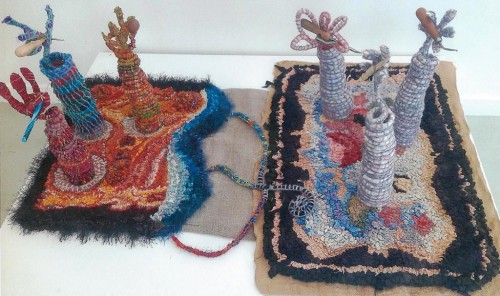
My later work has been influenced by the very creative Judi Tompkins as we work together on the Australian Rugmakers Guild website.
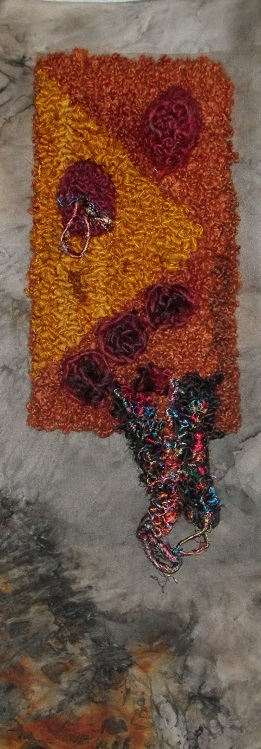
I also find inspiration through my association with the Western Australian Fibre & Textile Association. The membership represents emerging artists from different textile disciplines, providing an inspiring motivational environment, helping me to find my creative side, and to draw myself away from the “technical – by the book” approach!
Volunteering as WAFTA Librarian means I’ve access to a wide collection of books on many different techniques. A learning experience in itself, as updating the library catalogue and setting up and maintaining the catalogue online, requires me to look through these inspiring publications.
Are you pleased with your artistic progress? What boundaries or limitations do you find are the hardest to push?
While I’m pleased with my artistic progress, I still value the traditional aspect of the craft of rug hooking knowing the reasons for the “rules” were mostly to do with serviceability.
However, I must say I’m enjoying the challenge of creating my own pieces. The hardest thing for me is to let myself “free up” and over-come the urge to try and just reproduce what I see and to stop worrying about being technically correct.
Apart from pushing my “creativity”, I’m proud that in my “senior years” I’ve entered the world of IT and social media and have been able to apply what I’ve learned to various organizations; Local, State, National and International. This speaks to networking which is so important in making the rug hooking craft known, especially in Australia, and helping to bridge the art/craft divide.
Where do you see your work in 1 – 2 – 5 years? In other words, where do you see yourself going with your current approach and technique?
Initially I was interested only in completing kits and giving rug hooking lessons.
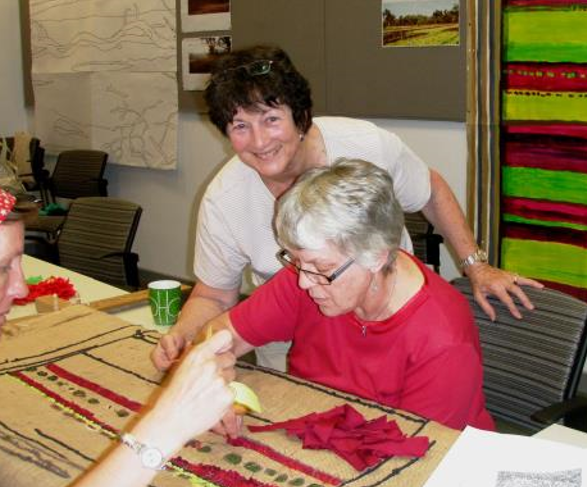
To do this I had to first try and promote the craft and fell into the role of publicist for rug hooking in Australia. I’ve been Editor since the inception of the Australian Rugmakers Guild in 2008; covering this same position for TIGHR (The International Guild of Handhooking Rugmakers) from 2009-2015.
At the same time becoming the leader of a Community rug hooking group.
Over the 7 years of the Community Group’s existence, it has grown not only in numbers but also in creativity, with much sharing of techniques by the members.
I’ve facilitated the completion of several major works by this group, the works both donated to, and purchased by, the City, as well as creating a finalist entry in a “wearable art” competition in 2014.

Writing about rug hooking and networking is something I really enjoy, so I would like to continue with this while pushing myself to be more creative and enter rug hooked works in “textile art” exhibitions.
In what way do you think the techniques you currently use relate – or could relate – to other textile techniques? In other words, would you look to incorporation of other media as part of your work?
With the interest in up-cycling by many textiles groups and the use of re-cycled fabrics, I can see rug hooking techniques easily being incorporated into other disciplines. Likewise, embellishing and incorporating other media into my rughooking is possible, since rugs are no longer made only for the floor and serviceability is no longer the main consideration.
